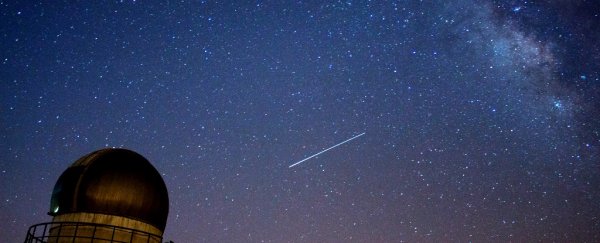The dazzling Lyrid meteor shower is starting this week.
The annual shower, which happens between April 16 and 25 each year, occurs when the Earth passes through the tail of a comet.
While meteor showers are difficult to accurately predict, you'll probably get your best glimpse of it in the early morning hours of April 22 (if you're in the northern hemisphere), when the waxing moon is least likely to interfere.
That's when the meteor shower is supposed to "peak," with around 10-20 meteors per hour showing, according to EarthSky.
Head outside before dawn on Sunday for the best view.
The waxing moon should set before the meteors appear, making for perfect viewing – though meteor showers are notoriously fickle. You'll want to go to an area with the least amount of light pollution and tall structures to obstruct your view.
You might be able to catch some meteors on the mornings of April 21 and 22 as well, as the waxing moon will keep the skies dark enough just before dawn to see some meteors light up the sky.
Meteor showers can be viewed with the naked eye, and in fact, a telescope or binoculars may cause you to miss the shower as the meteors can appear all over the sky.
The Lyrids are debris from the comet Thatcher, named after A.E. Thatcher, an astronomer who identified the comet the last time it approached Earth in 1861.
The comet, which takes 415 years to orbit the sun, isn't expected back until 2276, according to EarthSky.
The Lyrid meteor shower is one of the oldest known meteor showers. Chinese astronomers compared the Lyrids to a "rainfall of stars" in the year 687 BCE.
Happy viewing!
This article was originally published by Business Insider.
More from Business Insider:
